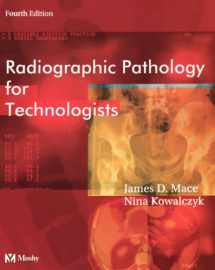
Radiographic Pathology for Technologists
Book details
Summary
Description
This well-illustrated textbook presents a concise, "essentials" approach to the pathologic processes most likely to be diagnosed using medical imaging. It familiarizes readers with the radiographic appearance and origins of the disease or injury, as well as the likely prognosis, in order to produce radiographs of optimal quality. Organized by body system, each chapter begins with an explanation of anatomy and physiology before moving on to imaging considerations. This edition includes the most current information on new imaging techniques such as MRI, CT, ultrasound, and PET scanning. Instructor resources are available; please contact your Elsevier sales representative for details.
- Concise, practical coverage of radiographic pathology presents about 150 injuries and abnormalities most frequently diagnosed using medical imaging.
- Each disease is categorized by type, with a description of its radiographic appearance, signs and symptoms, and treatment.
- Discussions of correlative and differential diagnoses highlight the important role of high-quality images in the diagnostic process.
- A separate chapter on trauma (Chapter 11) explains the multisystem implications of traumatic injuries.
- Key terms are listed at the beginning of each chapter, as well as bolded and defined within the text, in order to help readers learn important terminology.
- Chapter outlines and objectives aid in organizing and orienting readers to the material that will be covered in each chapter.
- Multiple choice and discussion questions at the end of each chapter help readers assess their comprehension.
- Expert contributors have revised the Imaging Considerations portion of each chapter and provided images that reflect the latest advances in various imaging modalities.
- Expanded coverage of modalities other than plain film radiography includes ultrasound, MRI, CT, nuclear medicine, and PET imaging as appropriate for diagnosis of a particular disease, injury, or abnormality.
- New summary tables at the end of chapters list the pathologies from the chapter, as well as imaging modalities of choice for each pathology.
- Over 200 new illustrations, including radiographs, CT, MR, and U/S scans, showcase pathologies best demonstrated by plain-film radiography as well as alternative modalities.


We would LOVE it if you could help us and other readers by reviewing the book
Book review



